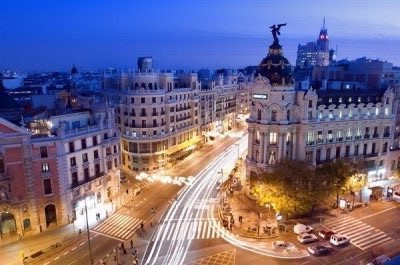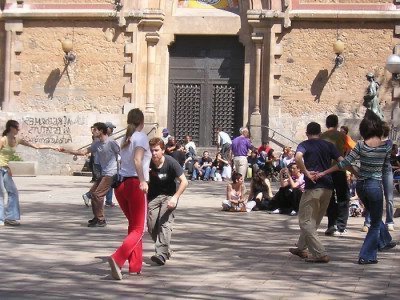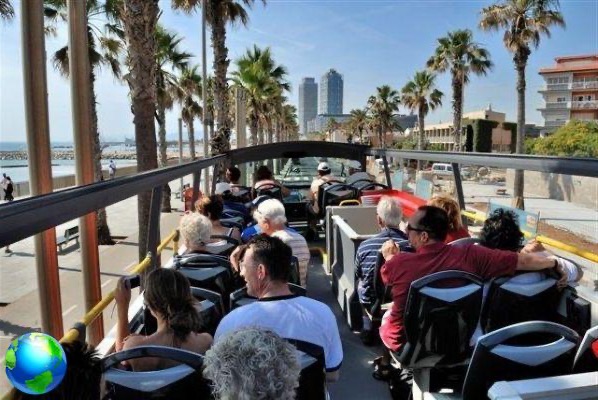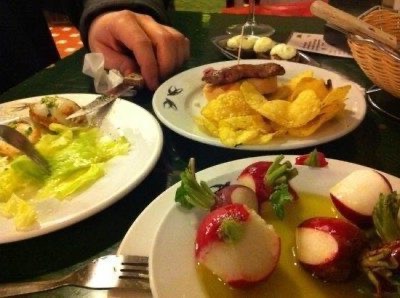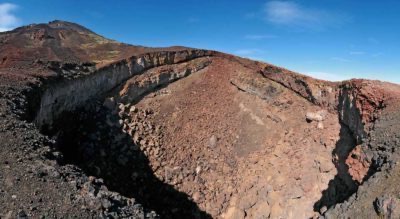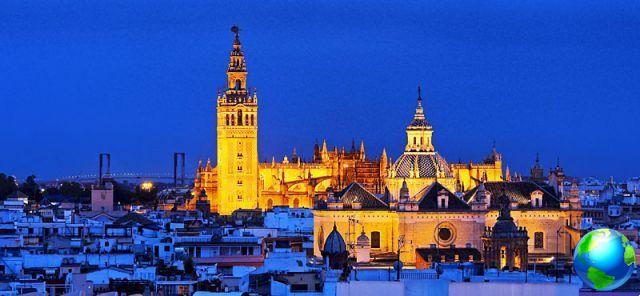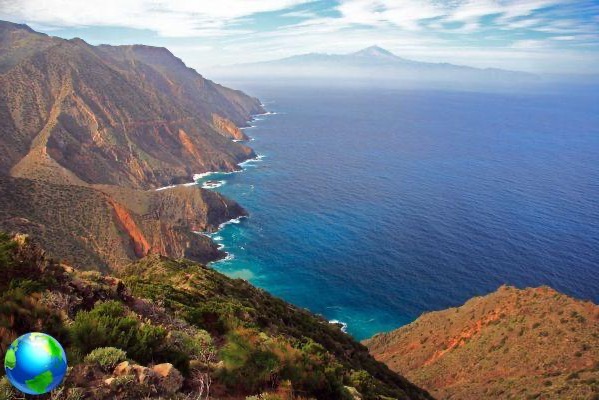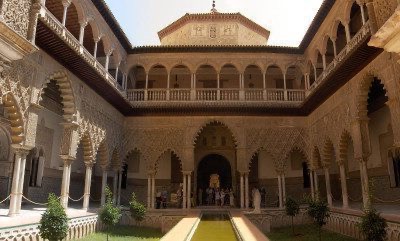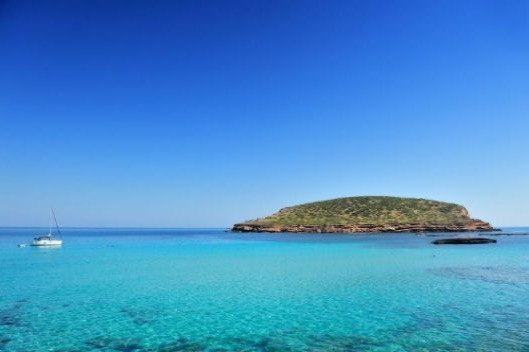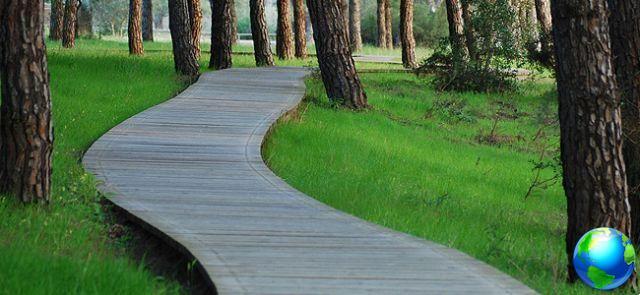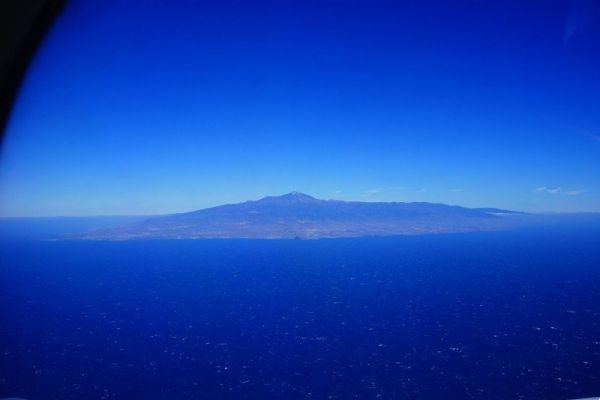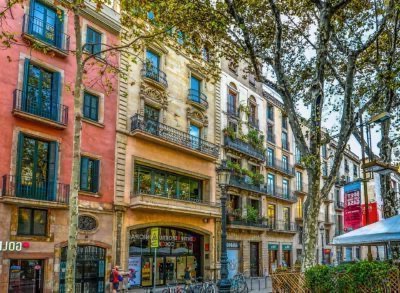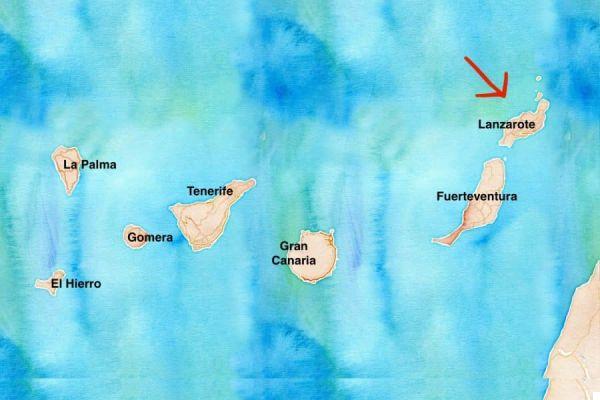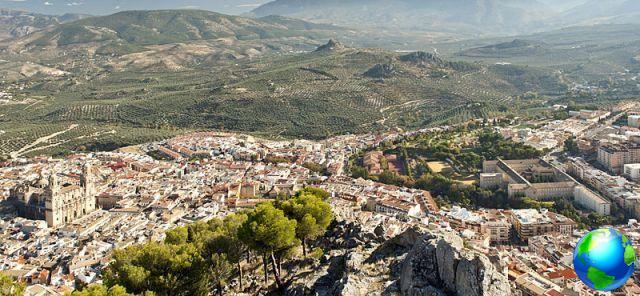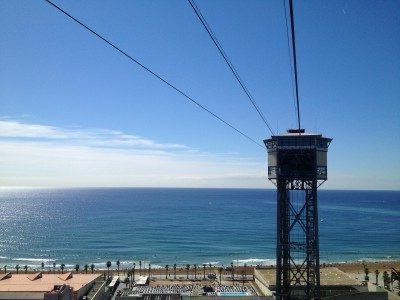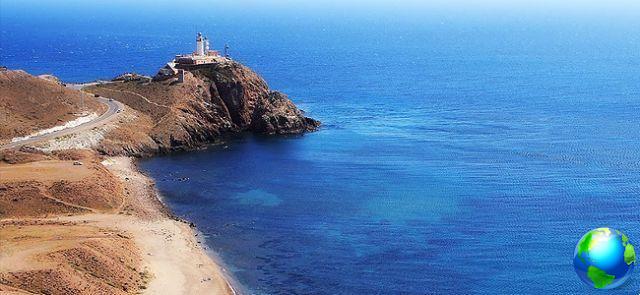

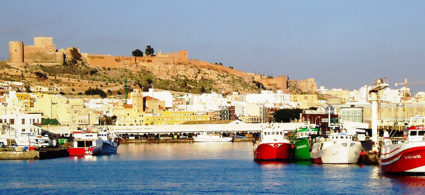
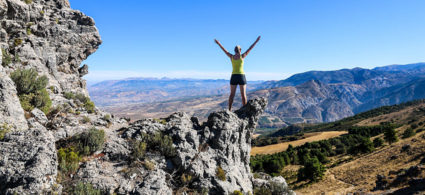
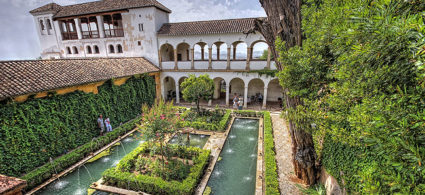
We reveal a secret: one of the most beautiful corners of Andalusia is the Cabo de Gata-Nijar Natural Park, where the only true desert in Europe meets some of the most beautiful beaches of the Mediterranean.
With about 100 ml of rain per year Cabo de Gata and the least rainy place in Europe as well as the only one in continental Europe to have a climate classified as a desert type.
But don't expect a flat and monotonous landscape: the rock formations and headlands within the park have spectacular shapes and colors. Furthermore, although the territory is arid, the flora and fauna of the park are very rich: in fact, more than 1000 animal and plant species live, which have adapted to the very high temperatures and scarcity of water.
To find some relief from the scorching temperatures of the area, all that remains is to dive into the blue waters of the sea that bathes the 340 km of coast of the park, dotted with wonderful beaches still little known to tourists.
Adding even more magic to this surreal landscape are the abandoned buildings and villages that you will encounter here and there while exploring the park by car or on foot, testifying to the harsh living conditions in an area where water is scarce.
Tourism has brought wealth to these inhospitable lands: the secret we have revealed to you has in fact been known for some time to tourists of other nationalities.
Fortunately, despite some sad episodes of building speculation, tourism development has moved in the direction of sustainability. It is therefore still possible to enjoy nature, peace and silence, interrupted only by the waves of the sea.
The beaches of Cabo de Gata and its surroundings
Along the coast of the promontory of Cabo de Gata you will find some of the most beautiful beaches of Andalusia… And some say of the whole Mediterranean. The number of beaches in and around Cabo de Gata is truly impressive: there are more than 40, all of which are enchanting.
The coast falls almost entirely within the natural park area: it is therefore a protected area, which allows you to enjoy hours of relaxation immersed in unspoiled nature. Topless and naturism are widespread.
In many of these beaches you will not see any buildings, electric wires, bars or roads. They are in fact wild beaches, not equipped, and often to reach them you need to leave the car in a parking lot and continue on foot along steep paths.
Finding a kiosk on the beach is very rare so it is important to remember to bring an abundant supply of water and something to eat. There are also very few opportunities to shelter in the shade: protect yourself from the sun with a cream and hat.
These inconveniences are amply rewarded by the emotions you will feel at the sight of these wonderful beaches. It would take a month or more to explore them all at your leisure, but those who don't have that much time can head straight for most beautiful beaches of Cabo de Gata and surroundings that we recommend below.
Beach of the Dead and Beach of the Genoveses
Playa de Los Muertos and Playa de los Genoveses compete for the title of "most beautiful beach in Cabo de Gata". It is really difficult to determine which is the most beautiful: if in doubt, it is better to see them both.
A surreal landscape awaits you at Beach of the Dead, a long beach of fine white pebbles close to dark hills with unusual rounded shapes.
The beach is bordered by two rocky heads to which we owe the sad name: from the top of these rock spikes the shipwrecked people brought by the sea were sighted. The crystal clear waters invite you to take a dip but beware of the currents as they are quite strong in this section.
If you prefer calm and shallow waters where you can swim safely go to Los Genoveses Beach, a magnificent sandy beach set in a crescent-shaped bay surrounded by a large area of dunes. More than a kilometer long and 80 meters wide, it owes its name to a Genoese fleet that found shelter here in the XNUMXth century.
On low tide days you can admire the rocks on the seabed, which obscure the turquoise color of the waters.
Monsul Beach
Monsul Beach it is one of the most emblematic images of the Cabo de Gata park: on the one hand a suggestive “alive” sand dune, which changes shape and size with the wind and will make you dream of being in the Saharan desert; on the other, a huge tongue of lava rock that laps the beach and the sea; all around rock walls of volcanic origin with bizarre shapes.
Due to its particular beauty, this beach has been used as a location to shoot many films, including some scenes of “Lawrence of Arabia”.
It is easier to reach than other beaches in the park and for this reason it is very crowded in the summer months, while remaining much quieter than the beaches of the more fashionable seaside resorts.
Big Cove
Less known but in our opinion it is worth seeing Big Cove, a dark sand beach bordered by a peculiarly shaped rock spike, like a bullet fired from the earth upwards and remained embedded in the ground. Despite its name, Cala Grande is only 200 meters long and 30 meters wide.
Cala Chica and Cala Los Amarillos
The ideal place for those who want to enjoy nature in total peace is Cove Girl, a very difficult beach to reach and therefore not very popular. It is a small beach of golden sand set against impressive vertical rock walls.
Cala Chica is part of the so-called Cala Grande together with Cala Grande Coves of the Barronal, four small beaches connected to each other by footpaths. The other two are El lance del Perro and Cala Principe.
Another isolated beach, close to rocky walls, is Cala los Amarillos, which boasts a crystal clear sea and fine sand.
Other beaches not to be missed in Cabo de Gata and its surroundings
If you have time, take a look at these beautiful beaches too:
- San Jose Beaches, Cabo de Gata Beach: are the city beaches, the only ones to offer services and amenities.
- San Pedro Beach: sandy beach with a large green spot behind it.
- Tomato Cove: mixed sand and pebble beach dominated by vertiginous white cliffs overlooking an incredibly blue sea.
- Cala Carnaje: pebble and rocky beach, very narrow and 450 meters long, famous for the Cerro de Los Lobos, a rocky outcrop from which you can enjoy a beautiful view of the cove.
- Arco Beach and El Esparto: one of the few red sand beaches in the area.
The lighthouse of Cabo de Gata
An attraction not to be missed inside the park is the solitaire Cabo de Gata lighthouse, which stands on the southern tip of the promontory. In this area the coast is rugged and jagged and the scenery is truly impressive: the noisy waves crash against the rock and the lighthouse stands out against a blue background where it becomes almost difficult to distinguish the sea from the sky.
It can be reached along a winding road that winds along the steep cliff. From the belvedere of the lighthouse you can admire the enchanting Cliff of the Sirens (Mermaids Reef) of volcanic origin and imagine for a moment that you are at the edge of the world.
If you are not yet satisfied with sea views you can take a walk and reach the White Sail Watchtower, an observation tower built in the eighteenth century which is about 3 km.
Trekking and sports activities at the Cabo de Gata-Ninjar natural park
The Cabo de Gata-Ninjar Natural Park is a dream place not only for lazy afternoons on the beach but also for outdoor sports.
Il trekking it is certainly the most popular activity: the surface of the park is crossed by numerous paths immersed in a beautiful natural setting. There is something for everyone: from an easy walk along the waterfront to challenging hikes that require a whole day.
In theory, you could walk all the 60 km of coast that goes from Retamar to Agua Amarga, but for those who want to feel unable to face such an adventure, here are some recommended treks:
- San José - Los Escullos (the path starts from Cala Higuera)
- Cabo de Gata Lighthouse – White Sail Tower
- Los Escullos - Cerro Penones: via Barranco del Negras (easier) or via Los Alboricoques (challenging: about 23 km)
- The Escullos – Isleta del Moro
Given the high temperatures it is dangerous to undertake a demanding excursion in the hottest months; in any case, it is always good to bring an abundant supply of water and something to eat with you because you will not find refreshment points along the way.
It should also be borne in mind that the paths are not well signposted. Generally given the wide visibility this is not a problem, but for greater safety it is good to get a hiking map of the park in advance.
If trekking is not your thing you can do many others sports activities within the park, including diving, snorkelling, kayaking, sailing, horseback riding, golf and cycling. For an adventurous day you can join a 4 × 4 tour of the park.
Where to sleep in Cabo de Gata
Find a hotel in the natural park of Cabo de Gata-Nirja it is not difficult because tourism in the area is well developed and solutions can be found for all budgets, from cheap hostals (1-2 star family run hotels) to luxurious adults only spas. Holiday homes and resorts are recommended for families and those who don't want to be tied to hotel schedules.
In some villages there is a good choice of hotels and b & bs, in others the options are more limited; the same goes for bars, restaurants and shops. In all of them it is advisable to book well in advance if you travel during the high season: keep in mind that this area is very popular with Spanish tourists, both local and those from other regions.
Here are the recommended locations where to sleep in the park of Cabo de Gata-Nirja.
Cabo de Gata
San Miguel de Cabo de Gata, more commonly called Cabo de Gata, is one of the main villages within the park. It is located on the west side of the promontory, which has fewer beaches than the east one, however, you can easily visit the famous salt pans of Cabo de Gata with its elegant flamingos and the lighthouse.
It is recommended for those who want to be able to move comfortably.
San Jose
On the east side of the promontory the most important city is San Jose. A former fishing village, today it is probably the most touristy spot in the Cabo de Gata park, but don't expect the crowds of the Costa del Sol's most famous beaches. Hotels and resorts are concentrated around a pretty bay; at one end of the bay there is a characteristic marina.
It is recommended for those who want the typical holiday atmosphere of a seaside resort.
The Escullos and Las Negras
The Reefs e Black ones they are located on a more inaccessible and difficult to reach area: to move you will have to travel along winding roads with long detours inland.
They are two tiny villages recommended for those who want absolute peace and those who want a taste of local life.
Bitter water
Bitter water it is the northernmost locality on the east side of the promontory and therefore the closest to the Murcia region. It is a quiet village with a hippy-chic atmosphere where you will meet characters with casual clothing who, however, stay in villas with heated pools and whirlpools.
It is the recommended location for those looking for a more refined accommodation.
Niger
Niger it is one of the most important inhabited centers in the territory of the park but it is the farthest town from the coast (about 40 km) and therefore one of the least popular among tourists. Do not disdain it: it is a pretty village of Arab origin, with typical white houses and flowered balconies, famous for its colorful ceramics.
The beauty of the surrounding landscape is breathtaking and in the area you can book charming rural houses with gardens and swimming pool carefully decorated in Moorish style for the price of a mid-range hotel (or even less in the low season).
How to get to the Cabo de Gata-Nirja natural park
Reaching the villages of the Cabo de Gata-Nirja natural park by public transport is difficult: there are direct buses departing from Almeria for El Cabo de Gata, San José, Agua Amargua, Las Negras but they are infrequent and some services do not run on Sundays.
Much simpler it is rent a car. The Autovía del Mediterráneo (signposted as A7 or E-15, from which you will then take the N-340) is a quick link to all the locations in the park, and there's not even a toll to pay!
Here are the recommended exits for the main cities:
- exit 471 San Jose: consigliata per San José, Los Escullos and Cabo de Gata.
- exit 467 Cabo de Gata.
- exit 494 Carboneras: consigliata for Bitter Water, The Argamason, Gafares, the Bird Cave, The Leaper.
- exit 487 Campohermoso-Las Negras: consigliata per Las Negras, Fernán Pérez, Las Hortichuelas, Las Negras, Rodalquilar and San Pedro.
- exit 481 Nijar-Lucainena: recommended for Campohermoso.
- exit 460 Airport, Cabo de Gata and El Alquián: recommended for Almeria airport, Cabo de Gata, El Alquián and de San José.
If you don't want to rent a car, we recommend that you join a day tour departing from Almeria. It is a guided bus tour that will show you the most interesting natural, geological, historical and cultural attractions of the area.




